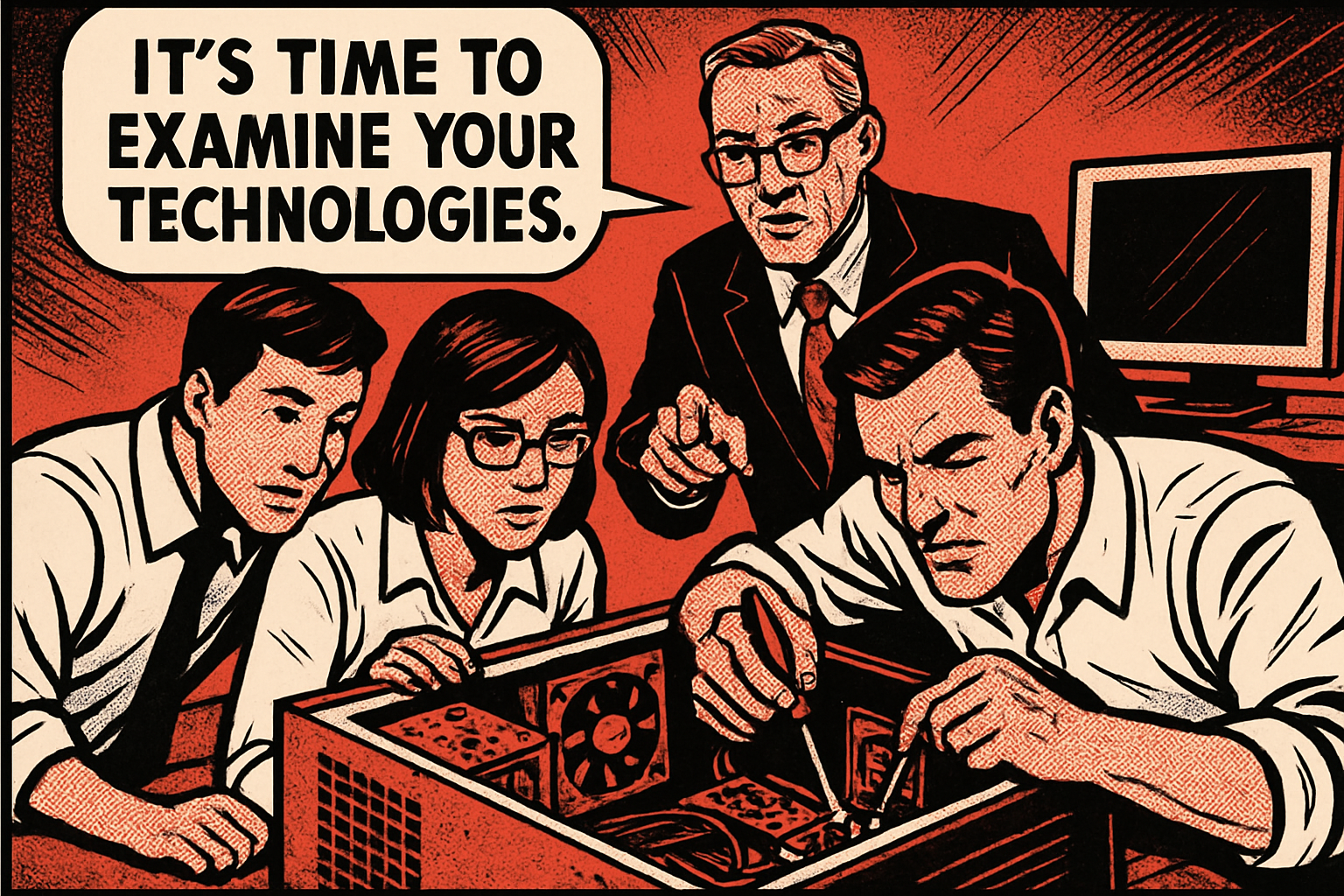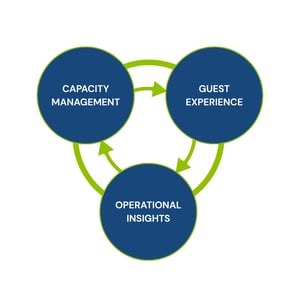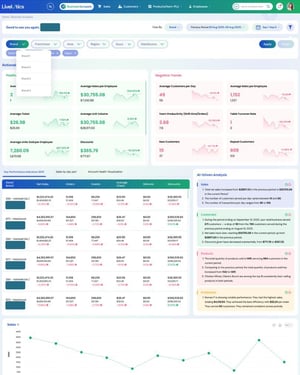Make the Quiet Months Count — Revisit Your Restaurant Tech Stack Now

Contents
If you’re running a full-service restaurant or a multi-unit chain, you know how things ramp up hard and fast. Summer is packed, holiday season looms, and there’s barely time to catch breath. That’s why the quieter stretch — typically late-fall into early Q1 — is prime time to pause, audit, and optimize your tech stack.
Here’s how to make the most of the downtime — and how our trusted vendor ecosystem from OGC can help you do exactly that.
Why now?
-
When guest volume dips and operations ease up slightly, you’ve got head-space to focus on improvement, not just firefighting.
-
It’s the perfect window for aligning your tech stack with your strategic goals for next year (growth, efficiency, guest experience).
-
Fixes you make now pay dividends when business spikes again. Think fewer outages, smoother integrations, more aligned data, better staff readiness.
Conduct a tech stack audit
Here are the steps I recommend:
-
Inventory your current components – POS, kitchen systems, delivery/third-party integrations, guest-facing tools, staff training tools, analytics, networks & security.
-
Map interdependencies – Which tools talk to each other? Where are the data hand-offs? Are there duplication or silos?
-
Check performance vs goals – Are your systems delivering on what you committed to guests, staff and operations (e.g., speed, accuracy, engagement, loyalty)?
-
Identify gaps and redundancies – Are there tools you no longer need? Missing capabilities you need next year?
-
Prioritize optimization areas – Based on impact vs effort: e.g., “resolve manual kitchen promise-time bottlenecks” or “improve staff training engagement” or “clean up network downtime risk”.
-
Budget & roadmap for next year – Assign owners, timelines, cost estimates and expected ROI.
Suggested vendor focus areas
Here are key focus areas and corresponding tools from OGC’s vetted list that you might evaluate:
Kitchen throughput & off-premise efficiency
If off-premise (take-out, delivery, curb) is a major part of your revenue mix, make sure your kitchen flow and promise timing are optimized.
Tool to consider: Curbit — Provides real-time kitchen data to optimize off-premise orders, dynamic promise times and live updates.
Use your quiet time to:
-
Review actual vs promised prep/fulfillment times.
-
Evaluate whether kitchen bottlenecks exist (e.g., a surge of app orders clogs line).
-
Test enabling what-if scenarios: If you dropped promise time by 15 %, what staffing/flow changes would be required?
-
Run a pilot/POC with Curbit (or evaluate if you already have it) and build out rollout plan.
Data intelligence & unified visibility
You’ve got data everywhere — POS, delivery platforms, guest loyalty, staffing, operations. But if you can’t see it all in one place, you’re leaving value on the table.
Tool to consider: Livelytics — An end-to-end AI data intelligence solution to connect, process, and visualize your data, with real-time insights and reports.
Use this time to:
-
Conduct a “data hygiene” review: Are all your platforms feeding data into your analytics layer?
-
Define key metrics you’ll use in 2026 (e.g., average check by channel, cost per ticket fulfillment, staff turnover rate, guest repeat rate) and make sure your tools support them.
-
For brands already using Livelytics: build a deeper dashboard layer, identify actionable insights, and train leadership on usage.
Staff training, engagement & turnover reduction
![]() Your people are your most important asset. Systems are only as good as the team using them. If your front-line is under-trained, tools don’t matter as much.
Your people are your most important asset. Systems are only as good as the team using them. If your front-line is under-trained, tools don’t matter as much.
Tool to consider: Shifty — A training & communication app built for real-world servers and bartenders, gamified and human-centered to reduce turnover, enhance guest loyalty and empower teams.
Take these steps:
-
Review your turnover and training metrics: how many new staff this year? Time to proficiency? Engagement scores or mystery-shop scores?
-
Map training gaps: Which modules are most skipped? Which tools/staff segments show low adoption?
-
If not yet implemented: pilot Shifty in one restaurant or module (e.g., bar team) during slow period to build momentum before busier season.
-
Build internal communications: use quiet time to launch “why we’re training” story, get buy-in from managers, schedule monthly check-ins.
Integration & connectivity backbone
A strong tech stack isn’t just about individual tools — it’s about how they talk, how reliable the network is, how secure your data is. The quiet time is ideal to shore up the backbone.
Tool to consider: Khumbu — Simplifies complex integrations for restaurants, ensuring seamless connectivity between POS systems, delivery platforms, martech and emerging AI solutions.
And also: Secure Uptime — Delivers seamless connectivity and adaptive security for restaurant chains, managing the network gear, monitoring uptime, and reducing downtime risk.
Use this time to:
-
Audit your network uptime and major downtime incidents in the past year.
-
List all point-to-point integrations (POS → CRM, third-party ordering → kitchen, delivery platforms → fulfillment). Which ones had issues? Which ones are fragile?
-
Plan to consolidate or upgrade: For example, roll out Khumbu to clean up redundant integrations; or partner with Secure Uptime to harden your network for next year.
-
Update your disaster-recovery and incident response plans now (rather than during peak chaos).
Guest-facing experience & ordering ecosystem
In the new era, guest expectations keep rising. Digital self-service, ordering flexibility, and reliability matter more than ever.
Tool to consider: Bite — Intelligent kiosk solutions powered by AI, designed to streamline operations, increase average check sizes and elevate the guest experience.
And: Onosys — Powers customizable digital ordering for restaurant chains across web, app and call-center, giving brands full control of the online ordering experience. 
Here’s how to use quiet time:
-
Analyze your digital order ecosystem: Percentage of orders via app vs web vs call-in; abandonment rates; average check by channel.
-
Map the guest journey for digital: Discovery → order → payment → pickup/delivery → follow-up. Where are drop-offs? What feedback?
-
Pilot or upgrade: Introduce a Bite kiosk at one location for a quiet rollout; or refine your web/app ordering experience using Onosys.
-
Build a rollout and marketing communication plan so when you’re busy again, guests know about the upgrade.
Setting your roadmap for next year
Now that you’ve audited and identified gaps, leverage the quiet time to structure your roadmap. For example:
Q1: Launch pilot with Shifty for training; start network upgrade with Secure Uptime.
Q2: Roll out Livelytics across all units, build executive dashboard.
Q3: Expand Bite kiosks or Onosys ordering improvements; measure impact.
Q4: Scale Curbit kitchen optimization across all off-premise fulfillment sites; refine integrations with Khumbu.
Make sure each initiative has: owner, timeline, budget, success metric, and a communications plan (to staff or guests as needed).
Why partner with OGC now?
One Goal Consulting has already vetted the above vendors and built a “tech-stack map” specially for multi-unit restaurant operators who need scale, reliability and future-readiness. On a quiet weekend or slow period, we’ll help you:
-
Scan your existing stack and assess alignment with your goals.
-
Prioritize vendor selection and build a phased implementation plan.
-
Manage vendor relationships, ensure integrations and rollouts go smoothly.
-
Keep you focused on the strategic horizon, so you’re not constantly stuck in operations mode.
LET'S GET STARTED. WE CAN HELP.
The “quiet time” doesn’t mean doing nothing, it means doing the right things. Review your tech stack while the storm is calm, so when the volume surges again, you’re not scrambling, you’re optimized, aligned and ready to lead.